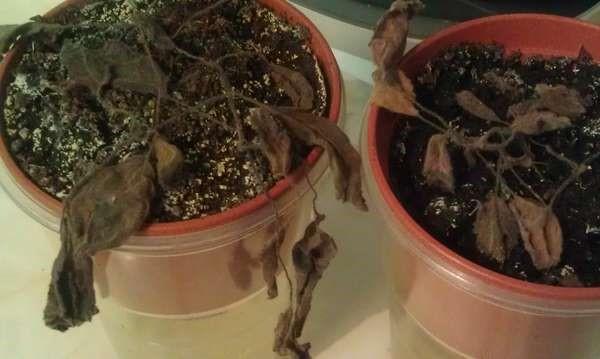All about the dormant period in gloxinia
 One of the most important moments in the development of gloxinia is the dormant period, because thanks to this, the plant can delight with its colorful flowering every year. In a rested and rejuvenated flower, more peduncles are tied, and the flowering itself lasts longer.
One of the most important moments in the development of gloxinia is the dormant period, because thanks to this, the plant can delight with its colorful flowering every year. In a rested and rejuvenated flower, more peduncles are tied, and the flowering itself lasts longer.
Read also:gloxinia - home care!
When does gloxinia go to rest?
A rest period is not required for all gloxinia. Young and small nodules still do not need it, but the bushes that have already produced flower stalks and have reached adult sizes go to rest for the winter.
Tubers that have reached a diameter of more than 2 cm, and which are over a year old, hibernate at the end of October or in November.
How to understand that gloxinia is preparing for a rest period?
The fact that the flower wants to take a break can be understood by its appearance:
- in a healthy plant, the lower leaves gradually dry out;
- over time, the entire aerial part of the flower dries up.
Shrinking gloxinia as a transitional stage of preparation for winter can take place even if there are peduncles on the bush. They may not have time to bloom, but this is not scary - the flower simply did not calculate its strength and threw out the peduncles too late.
You cannot cut off the remaining green top of the bush - it should dry out on its own. So all the nutrients from the green leaves pass into the tuber, and the flower gains strength before wintering.
How to prepare a flower for a dormant period?
As soon as the gloxinia has external signs of falling asleep, it is necessary to reduce the frequency of watering and completely eliminate feeding.
Since the bright light will now only interfere with the plant, the pot must be removed from the windowsill and placed in a darker place.
How to store tubers in winter?
When the gloxinia is completely dry (its green part), it's time to start sending the tuber for storage.
There are two ways to store nodules in winter:
- Directly in the pot without taking them out of the soil... Trim dry leaves and stems with scissors, leaving a small stump. Moisten the ground slightly and cover the flowerpot with a bag, tying it tightly. Once a month, you need to remove the bag to check the soil and, if necessary, moisten the soil again, watering only along the edge of the pot.
- In a bag with peat... Carefully remove the tuber, wash it, removing the remaining soil. Be sure to let it dry. Pour some peat into a bag and put a tuber on top. Spray a little water and close the bag tightly.
Where to store tubers?
Prepared gloxinia tubers should be stored in a dark and cool room. The maximum room temperature should be 15 degrees Celsius, and the minimum - at least 5 degrees.